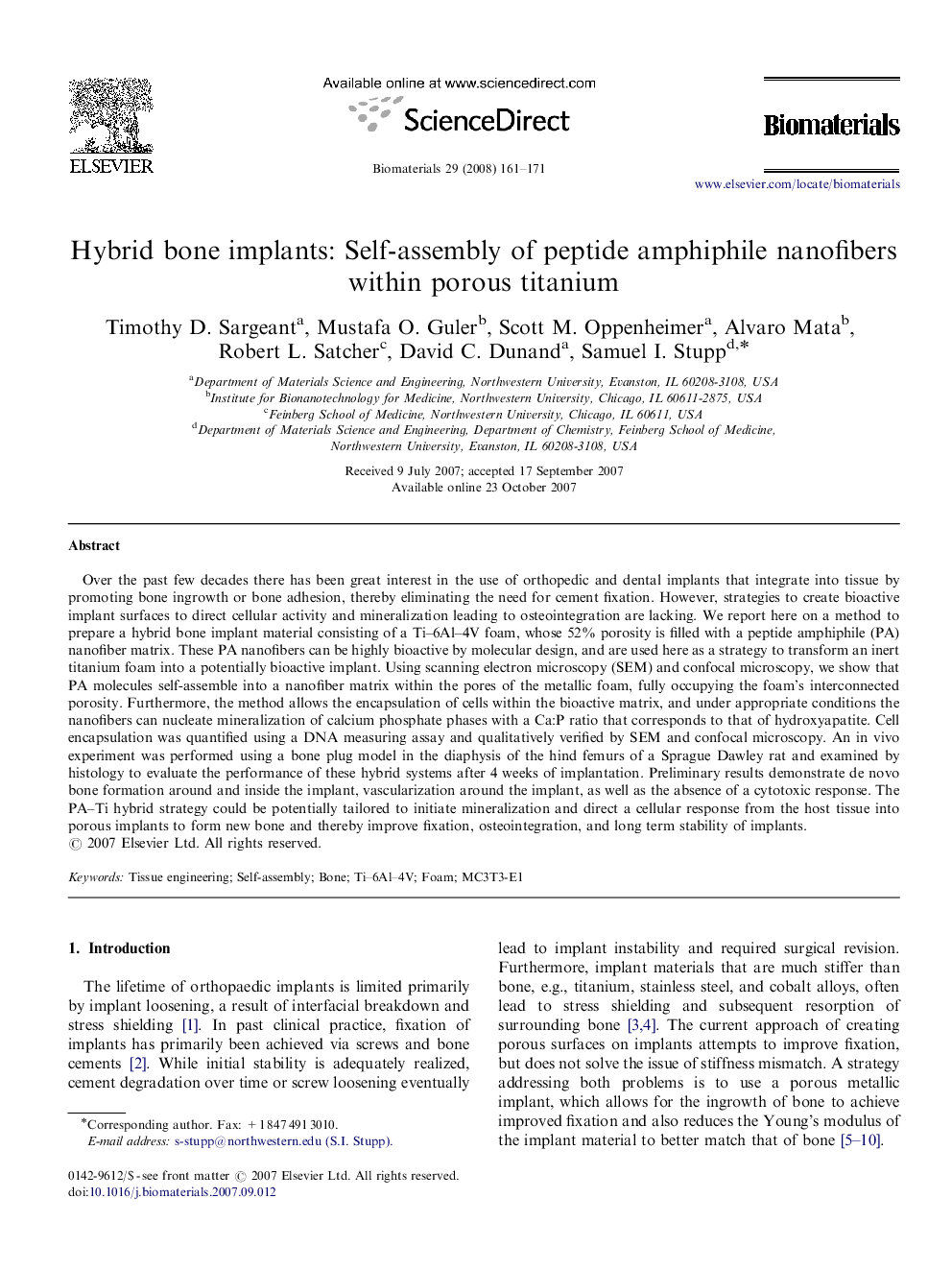| کد مقاله | کد نشریه | سال انتشار | مقاله انگلیسی | نسخه تمام متن |
|---|---|---|---|---|
| 11345 | 734 | 2008 | 11 صفحه PDF | دانلود رایگان |

Over the past few decades there has been great interest in the use of orthopedic and dental implants that integrate into tissue by promoting bone ingrowth or bone adhesion, thereby eliminating the need for cement fixation. However, strategies to create bioactive implant surfaces to direct cellular activity and mineralization leading to osteointegration are lacking. We report here on a method to prepare a hybrid bone implant material consisting of a Ti–6Al–4V foam, whose 52% porosity is filled with a peptide amphiphile (PA) nanofiber matrix. These PA nanofibers can be highly bioactive by molecular design, and are used here as a strategy to transform an inert titanium foam into a potentially bioactive implant. Using scanning electron microscopy (SEM) and confocal microscopy, we show that PA molecules self-assemble into a nanofiber matrix within the pores of the metallic foam, fully occupying the foam's interconnected porosity. Furthermore, the method allows the encapsulation of cells within the bioactive matrix, and under appropriate conditions the nanofibers can nucleate mineralization of calcium phosphate phases with a Ca:P ratio that corresponds to that of hydroxyapatite. Cell encapsulation was quantified using a DNA measuring assay and qualitatively verified by SEM and confocal microscopy. An in vivo experiment was performed using a bone plug model in the diaphysis of the hind femurs of a Sprague Dawley rat and examined by histology to evaluate the performance of these hybrid systems after 4 weeks of implantation. Preliminary results demonstrate de novo bone formation around and inside the implant, vascularization around the implant, as well as the absence of a cytotoxic response. The PA–Ti hybrid strategy could be potentially tailored to initiate mineralization and direct a cellular response from the host tissue into porous implants to form new bone and thereby improve fixation, osteointegration, and long term stability of implants.
Journal: Biomaterials - Volume 29, Issue 2, January 2008, Pages 161–171